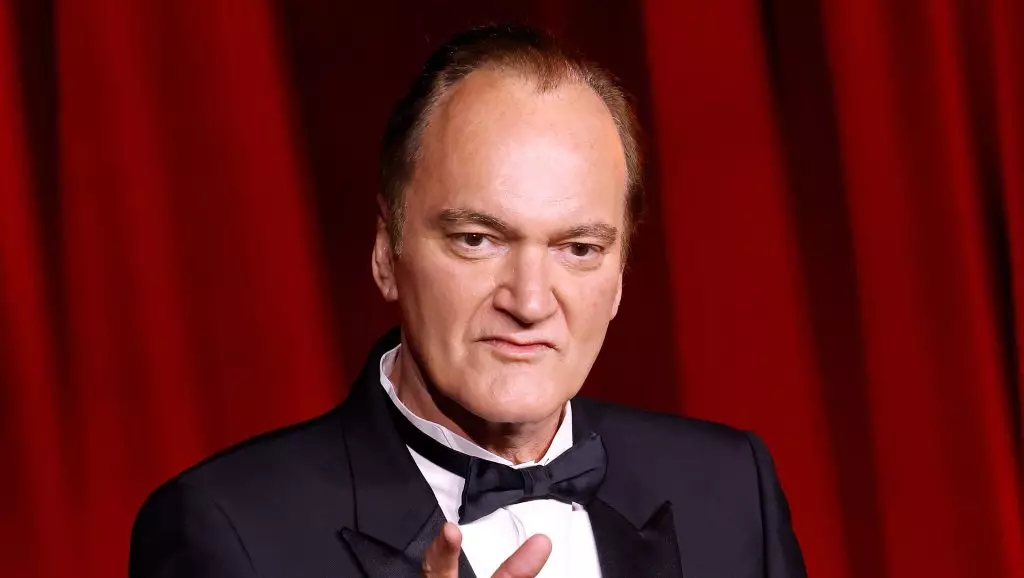Quentin Tarantino’s decision to abandon his long-anticipated final film, The Movie Critic, exposes a troubling disconnect between the iconic director’s reputation for bold storytelling and his recent wavering on delivering his promised swan song. For years, fans and critics alike looked forward to a definitive statement from Tarantino—one that would encapsulate his cinematic worldview and serve as a fitting farewell. Instead, what we received was a glimpse into the troubling internal struggles that often accompany creative giants—an unsettling display of indecision masked as artistic integrity.
Tarantino, celebrated for his cinematic flair and narrative prowess, recently revealed that his initial concept—an eight-part series transformed into a feature—felt right at first. However, as he moved into pre-production, his enthusiasm waned. This hesitation underscores a disturbing trend among auteurs: the inability to commit to their visions when faced with the brutal realities of filmmaking. Despite having a completed script, Tarantino’s reasoning for stepping back seems less driven by external inhibition and more rooted in his own internal conflict. His admission that he could do it whenever he wanted highlights a dangerous complacency—a tendency to prioritize comfort over the pursuit of artistic challenges.
What is particularly striking is Tarantino’s own acknowledgment that “no one’s waiting for this thing per se,” yet he still feels the weight of his reputation—an enormous burden that clearly impacts his creative process. His willingness to gut the project, simply because it no longer excites him, demonstrates an unsettling detachment from his audience’s expectations. It raises questions not just about the project itself but about the broader trend of artistic burnout and the myth that creators can indefinitely sustain their brilliance without risking mediocrity or indecision.
Throwing Away a Potential Cultural Landmark
The rationale for abandoning The Movie Critic underscores a troubling misunderstanding of what it means to create impactful art. Tarantino expressed that his challenge was to make a mundane profession—film criticism—into compelling cinema. Yet, this seems to border on arrogance, underestimating the richness and depth that such a subject could possess in capable hands. Instead of viewing this challenge as an opportunity for nuanced storytelling, Tarantino appears to have succumbed to a form of self-censorship, dismissing his own ideas as “boring,” while overlooking the potential for profound insights into the cultural role of critics and cinephiles.
Moreover, the notion that his title promised so much yet fell short reveals an underlying cynicism that has crept into his recent work. Many fans admired Tarantino for his audacity, his knack for blending violence, wit, and social critique into compelling narratives. To preface his final film with a sense of skepticism—questioning if it would be worth the effort—reflects a deeper crisis of confidence that tarnishes his legacy. His dismissiveness towards a film about a critic suggests a missed opportunity to challenge audiences’ perceptions and deepen our understanding of cinema’s influence.
The parallels Tarantino draws between his abandoned project and Once Upon a Time in Hollywood seem superficial at best, and his explicit denial of crossover characters indicates a reluctance to fully embrace the interconnected universe he has mythologized. It appears that his self-imposed boundaries and doubts have now become barriers. Instead of enriching his artistic universe further, he appears to be retreating into a shell of hesitation and retreats, betraying the very spirit of innovation he once championed.
What Does This Say About Artistic Legacy and Self-Perception?
In the end, Tarantino’s retreat from The Movie Critic reveals something disturbing about the toll of self-criticism on creative pursuits. His admission that he was initially “really, really excited” but lost interest mid-process suggests a darker truth about aging creatives: the challenge of maintaining passion and confidence amidst inevitable self-doubt. This retreat signifies a failure to confront internal fears—the very fears that often stoke artistic growth.
By choosing to pull the plug on his final project, Tarantino inadvertently confirms a narrative of complacency that runs counter to his once-rebellious reputation. Instead of ending on a high note or using his platform to push boundaries further, he appears to be quietly retreating into the comfort zone of nostalgia and unfinished ideas. This raises questions about the authenticity of his claimed farewell—if an artist like Tarantino can so easily abandon his most personal work, can he be truly proud of his legacy?
Ultimately, Tarantino’s wavering demonstrates the human side behind the myth—an artist battling with the internal conflicts that come with an evolving perspective on art, mortality, and relevance. While his indecision is disappointing, it also offers a sobering reflection on how even the most celebrated creators are vulnerable to doubt—a reminder that the pursuit of greatness is often riddled with setbacks, and sometimes, a final masterpiece remains elusive because of the very fears that should inspire boldness.


Leave a Reply